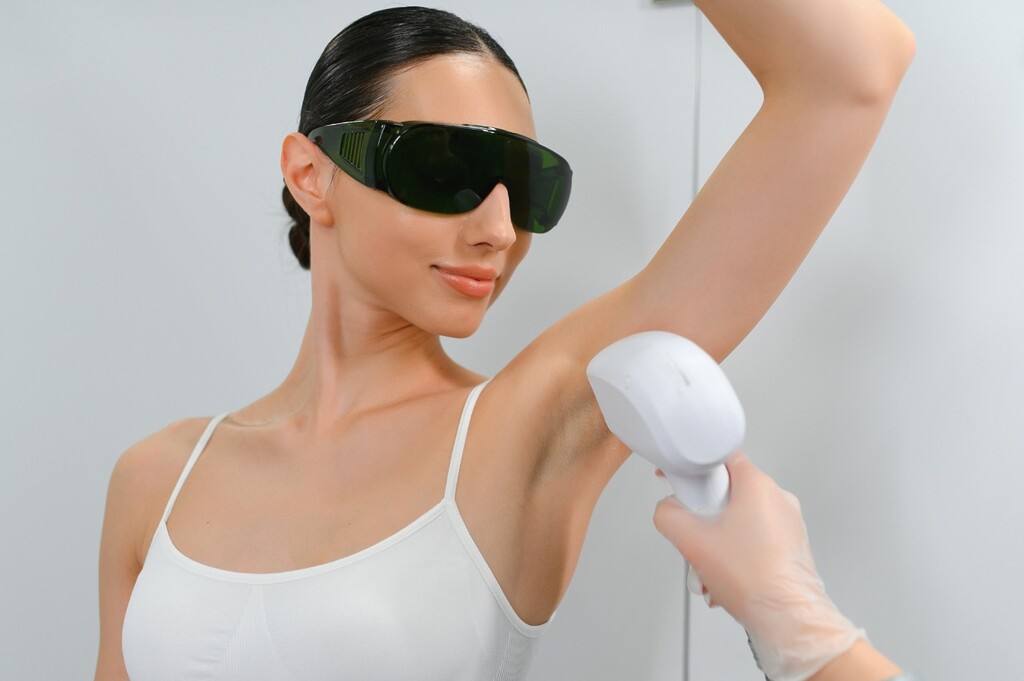In today’s world, where the quest for a youthful and flawless appearance is more prevalent than ever, non-surgical cosmetic procedures have surged in popularity. Among these, dermal fillers, a common filler, stand out as a preferred choice for those seeking to diminish the signs of aging without undergoing surgery. This article delves into the question: “What is dermal filler?” revealing how this revolutionary dermal filler product can transform your appearance by addressing common signs of aging like facial wrinkles, deeper wrinkles, smile lines, frown lines, marionette lines, and vertical lines.
What Are Dermal Fillers?
Dermal fillers are gel-like substances injected beneath the skin to restore lost volume, facial volume, connective tissue, and collagen production, smooth lines, soften creases, or enhance facial contours, effectively combating volume loss and shallow contours. Over the past few years, they have become a cornerstone in the aesthetic medicine field, offering a quick, relatively painless solution for individuals looking to achieve a more youthful, refreshed appearance. The most common types include hyaluronic acid, a common filler, calcium hydroxylapatite, poly-L-lactic acid, and polymethylmethacrylate beads, each with its unique properties and longevity, catering to different needs like treating acne scars or skin folds.
Benefits of Dermal Fillers
The allure of dermal fillers lies in their immediate results and minimal downtime, making them an attractive option for those with busy lifestyles who want to resume normal activities quickly after their initial treatment. From plumping thin lips to enhancing cheekbones, smoothing under-eye shadows to defining jawlines, the versatility of fillers is unmatched, providing beneficial effects that can last from six months to over a year, depending on the type of filler used, whether temporary fillers or permanent fillers, and the amount of material injected.
How Dermal Fillers are Administered
The process begins with a consultation with a licensed healthcare provider, where a qualified practitioner evaluates your facial structure, facial anatomy, and collagen production, discusses your aesthetic goals, and recommends the most suitable type of filler, considering factors like the risk of infection and potential complications. The actual procedure, an outpatient procedure often completed within an hour, involves the injection of filler into targeted areas, like tear troughs or cheek fillers, using fine needles, with details of laser treatment advised for additional fibroblast activity. Patients can return to their daily activities immediately, with some minor post-procedure care advised to maximize the treatment’s benefits and reduce the risk of adverse reactions, such as blistering reaction or foreign body reaction.
Potential Risks and Side Effects
While dermal fillers are generally safe, they are not without risks. Common side effects include temporary swelling, redness, and bruising at the injection site, which usually subside within a few days, but potential complications by onset like a complete nerve transection or adverse reactions should be monitored closely. More serious complications, though rare, can occur, emphasizing the importance of selecting an experienced and licensed health care provider like a cosmetic surgeon for your treatment to minimize the risk of complications by onset.
Personalizing the Dermal Filler Experience
Every individual’s face is unique, and so are their aesthetic goals, requiring personalized treatment plans tailored to align with personal desires, ensuring results that look natural and harmonious, preserving natural beauty. Setting realistic expectations is also crucial to satisfaction with the outcome, whether addressing static wrinkles or the appearance of scars, to achieve the desired lip volume or facial wasting correction.
The Longevity of Dermal Fillers
The lasting effect of dermal fillers varies, with some treatments maintaining their appearance for up to 18 months or longer, depending on factors like collagen stimulator and the individual’s metabolism. Periodic maintenance sessions, such as fat injection or additional filler injection, can help preserve the desired look and stimulate collagen production, supporting long-term results. The cost of dermal filler treatments can vary widely, influenced by the type of filler, the volume used, and the practitioner’s expertise, with details of laser treatment and antibiotic treatment, while not typically covered by insurance, many providers offer financing plans to make the procedures more accessible.
Cost Considerations
Dermal fillers provide a powerful option for those looking to achieve a flawless look without surgery, offering a biocompatible substance that refreshes and rejuvenates the face with minimal downtime and beneficial effects on connective tissue and facial volume. By addressing common signs of aging like facial wrinkles and deeper wrinkles, they offer a way to refresh and rejuvenate the face with minimal downtime, preserving natural beauty. If you’re considering this treatment, consulting with a qualified healthcare provider is the first step towards realizing your aesthetic aspirations and minimizing the risk of complications by onset or common risks associated with dermal filler treatments.
Dermal Fillers vs. Other Non-Surgical Treatments
Dermal fillers are just one of many non-surgical facial rejuvenation options available today, alongside procedures like non-surgical rhinoplasty or cosmetic treatments such as Botox injections, which offer anti-aging benefits through the inhibition of nerve signals. Laser treatments and chemical peels also provide alternatives, with details of laser treatment like 585-nm pulsed dye lasers promoting additional fibroblast activity to support collagen production. Each treatment modality has its specific advantages, addressing different concerns like dark circles or the appearance of lines, with clinical studies supporting their efficacy in enhancing facial appearance.
In conclusion, dermal fillers offer a safe and effective means of achieving a more youthful and refreshed appearance without resorting to invasive surgical procedures. By addressing common signs of aging like facial wrinkles and volume loss, they provide a versatile solution for individuals seeking to enhance their facial features and boost their confidence. However, it’s essential to approach these treatments with caution and seek guidance from qualified healthcare providers to minimize the risk of complications and achieve optimal results. Whether you’re looking to smooth out smile lines or define your cheekbones, dermal fillers can help you achieve your aesthetic goals and maintain a natural, youthful look for months to come.
FAQs
FAQs about Dermal Fillers
-
What are dermal fillers, and how do they work?
Dermal fillers are gel-like substances injected beneath the skin to restore lost volume, smooth lines, and enhance facial contours. They work by replenishing hyaluronic acid or stimulating collagen production, providing immediate results that can last from six months to over a year.
-
Who is a suitable candidate for dermal filler treatment?
– Suitable candidates for dermal fillers are individuals looking to diminish signs of aging such as wrinkles, fine lines, and volume loss without undergoing surgery. They should be in good overall health and have realistic expectations about the outcomes of the treatment.
-
Are dermal fillers safe?
– When administered by a qualified and experienced healthcare provider, dermal fillers are generally safe. However, like any medical procedure, they carry some risks, including temporary swelling, redness, bruising, and rare but serious complications such as infection or allergic reactions.
-
How long do the results of dermal fillers last?
– The duration of dermal filler results varies depending on factors such as the type of filler used, the treated area, and individual metabolism. Results typically last from six months to over a year, with some fillers providing effects that can endure for up to 18 months or longer.
-
What should I expect during the dermal filler procedure?
– During the procedure, a healthcare provider will first assess your facial structure and discuss your aesthetic goals. The filler will then be injected into targeted areas using fine needles. The process is relatively quick and involves minimal discomfort. Patients can typically resume their normal activities immediately afterward.
-
Are there any side effects associated with dermal fillers?
– Common side effects of dermal fillers may include temporary swelling, redness, bruising, and minor discomfort at the injection site. These effects usually subside within a few days. However, more serious complications, though rare, can occur, emphasizing the importance of choosing a skilled provider.
-
Can dermal fillers be used in combination with other cosmetic treatments?
– Yes, dermal fillers can be combined with other cosmetic treatments such as Botox, laser therapy, or chemical peels to achieve comprehensive facial rejuvenation. A qualified healthcare provider can recommend the most suitable combination of treatments based on your individual needs and goals.
-
How much do dermal filler treatments cost?
– The cost of dermal filler treatments varies depending on factors such as the type of filler used, the amount required, and the provider’s expertise. While dermal filler treatments are typically not covered by insurance, many providers offer financing options to make them more accessible to patients.
-
Is there any downtime associated with dermal filler treatments?
– Downtime after dermal filler treatments is minimal. Patients may experience some swelling, redness, or bruising at the injection sites, but these effects usually resolve within a few days. Most individuals can resume their normal activities immediately after the procedure.
-
How can I ensure optimal results from dermal filler treatments?
– To achieve optimal results from dermal filler treatments, it’s essential to choose a qualified and experienced healthcare provider, follow pre- and post-treatment instructions carefully, and communicate openly about your aesthetic goals and expectations. Regular follow-up appointments may also be recommended to maintain and enhance the results over time.

















































